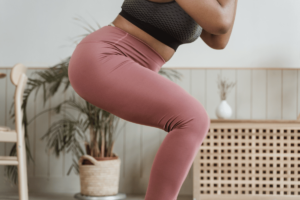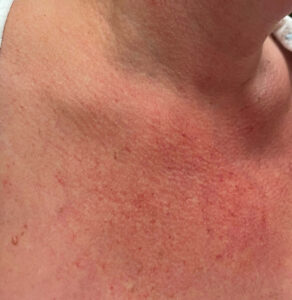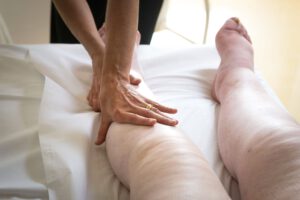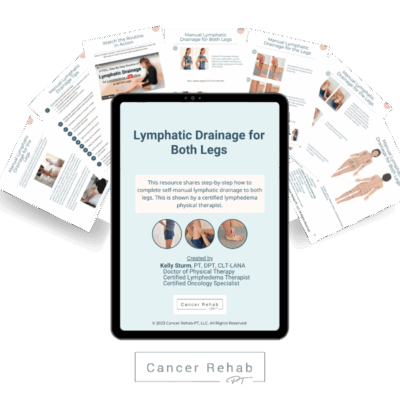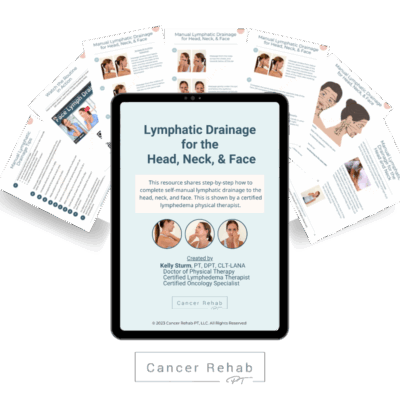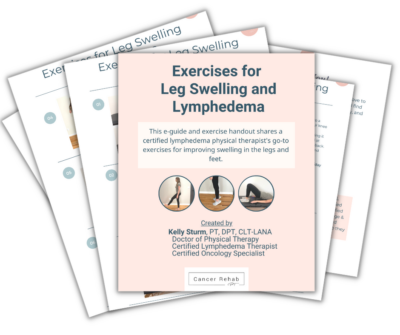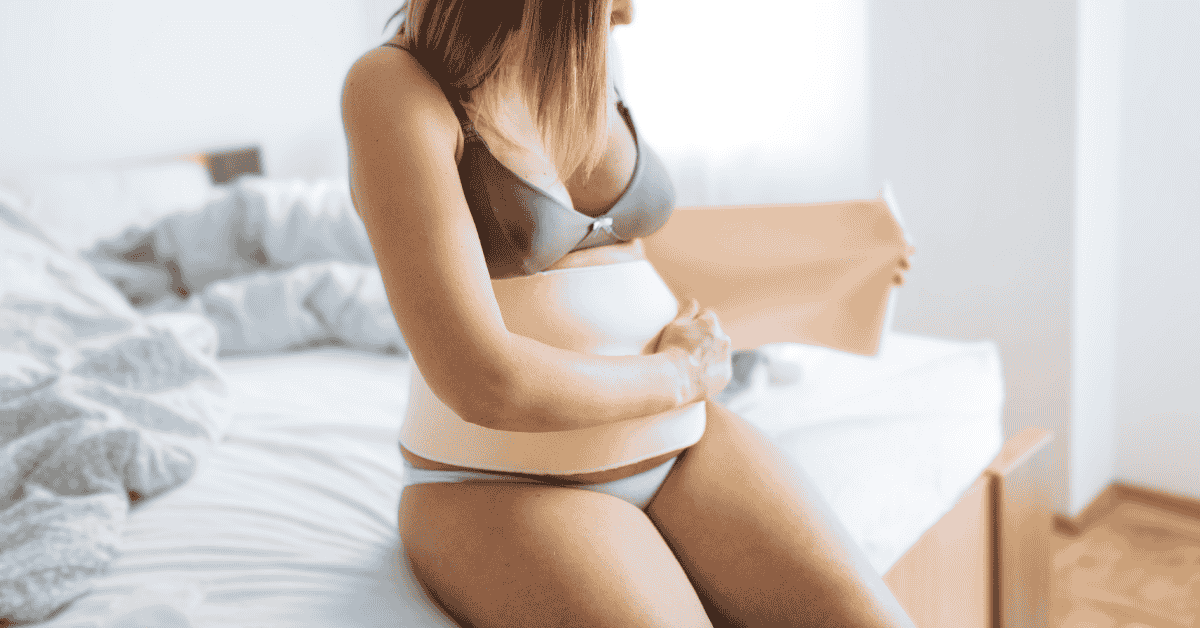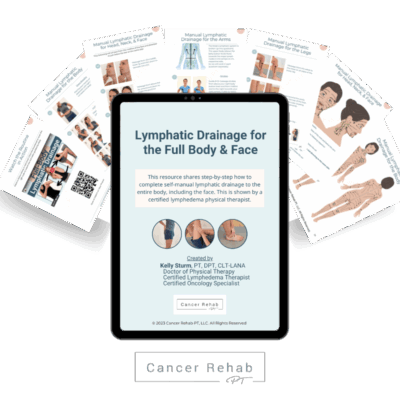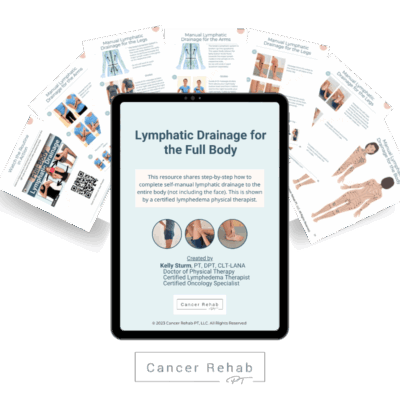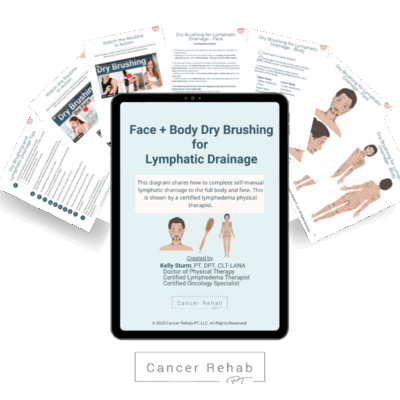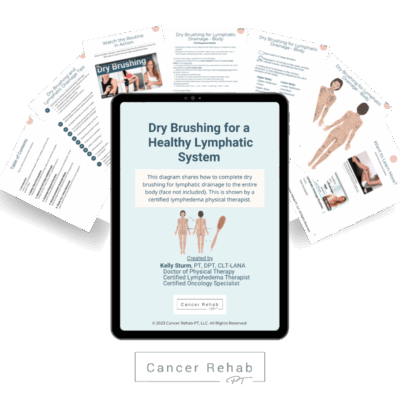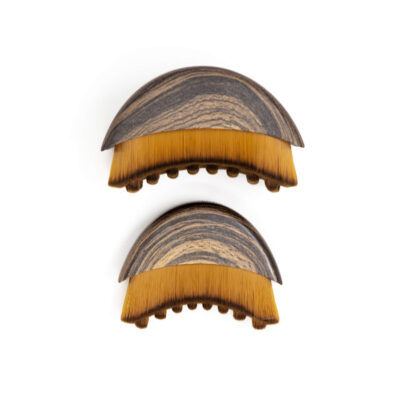Postpartum swelling affects many new mothers and happens when excess fluid builds up in your tissues after delivery. Your body retains extra fluid during pregnancy and birth, and it takes time for everything to return to normal.
This swelling is typically harmless, but it can make you feel uncomfortable and heavy. It may take a couple of weeks to go down naturally, but there are also gentle & natural methods you can use at home to help your body reduce this swelling a little faster.
Here’s what I recommend as a lymphatic specialist (and a mom of 2!). Most of these things you can do right from your couch while you’re bonding with your baby. If you’re looking for a fast & easy way to get started, you’ll enjoy this Face + Full Body Lymphatic Drainage Guide.
What Is Postpartum Swelling?
Postpartum swelling is when excess fluid accumulates in your body, most commonly in your hands, feet, ankles, and face.
During pregnancy, your body works overtime to support both you and your baby.
According to the American Pregnancy Association, during pregnancy, your body produces ~50% more blood and body fluids to meet the needs of your developing baby.
After delivery, your body needs time to eliminate this extra fluid through your kidneys and lymphatic system. Think of it like your body slowly getting back to its normal balance.
This process can take up to two weeks or more, and while there’s not really anything you need to do to ‘treat’ postpartum swelling, certain activities can help reduce fluid retention faster.
Is Postpartum Swelling Normal?
Yes, postpartum swelling is completely normal in most cases. Your body has just completed an incredible process, and the gradual reduction of excess fluid is part of your natural postpartum recovery.
In rare cases, sudden or severe swelling can indicate a more serious condition that requires medical attention, so it’s always a good idea to mention any concerns to your healthcare provider.
However, normal doesn’t mean pleasant.
If you want to reduce swelling faster, there are ways to support your lymphatic system and make your new postpartum life just a little bit easier!
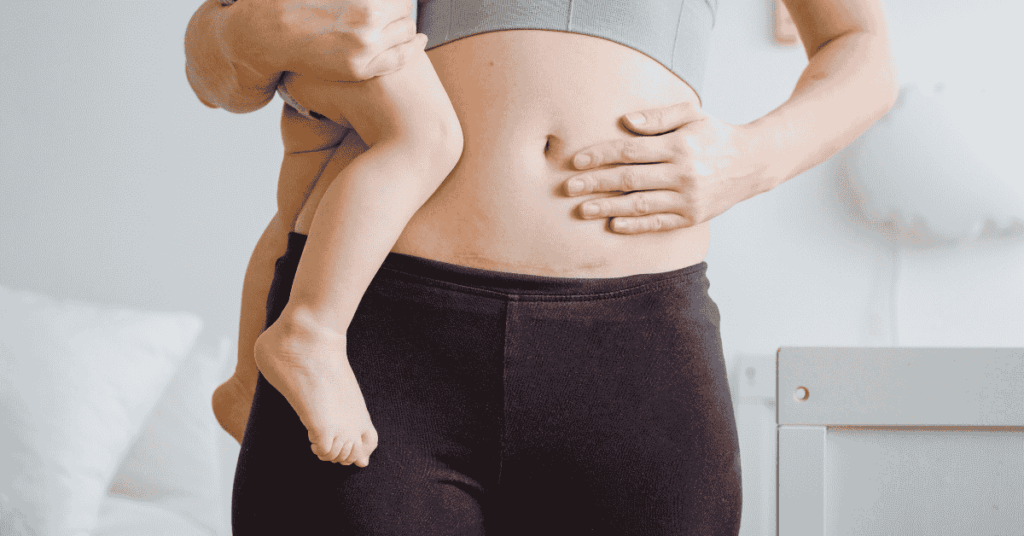
Types of Postpartum Swelling
Postpartum edema
Postpartum edema is the most common type of swelling new mothers experience. This is your typical swelling when your body retains fluids, usually affecting:
- Feet and ankles
- Hands and fingers
- Face, especially around the eyes
- Legs and calves
- Arms and wrists
This type of postpartum swelling is normal, and it should go down about a week or two after birth. You can try elevating your feet (particularly for leg swelling) and a gentle postpartum massage to help it resolve more quickly.
Breast engorgement
Breast engorgement is when your breasts become overly full with milk, which causes them to feel hard, painful, and swollen. Sometimes, especially in the early postpartum period, your body produces milk faster than it’s being removed (whether through breastfeeding or pumping).
To help with engorgement:
- Apply cold compresses between feedings
- Do a gentle breast massage
- Wear a supportive bra
- Consider expressing a small amount of milk for comfort
Once your milk supply is regulated, you should feel more comfortable. This can sometimes take a couple of weeks.
Hemorrhoids
Hemorrhoids are swollen blood vessels in the rectal area that can develop during pregnancy or childbirth. The increased pressure from your growing baby, combined with the pushing during delivery, can cause these vessels to become enlarged and inflamed.
They often feel like tender lumps and can cause discomfort when sitting or going to the bathroom. You can help reduce hemorrhoid swelling by using cold compresses and taking warm sitz baths.
Perineal swelling
Perineal swelling affects the area between your vagina and rectum, which stretches a lot during vaginal delivery. This tissue can become swollen and tender as part of the natural healing process, especially if you had an episiotomy or tearing during birth.
This is because your body sends extra blood flow to the area to promote healing. Cold packs and gentle positioning can help reduce this type of swelling, although it can stay sensitive for a couple of weeks after birth.
Deep Vein Thrombosis (DVT)
This is the serious one to watch for. Deep vein thrombosis is a serious condition where a blood clot forms in a deep vein, usually in your leg. This isn’t swelling from fluid retention, and it requires immediate medical attention because the clot can potentially travel to your lungs.
Watch out for these warning signs:
- Swelling in one leg
- Pain or tenderness in your leg
- Warmth in the affected area
- Red or discolored skin
- Painful swelling that gets worse
DVT is rare, but your risk is higher during pregnancy and the postpartum period because of the hormonal shifts and reduced mobility. If you experience any of the symptoms above after giving birth, see a doctor immediately.
When Should I Be Worried about Postpartum Swelling?
Most postpartum swelling is normal and will resolve on its own. However, contact your healthcare provider right away if you experience:
- Sudden or severe swelling that comes on quickly
- Swelling that’s only affecting one side of your body
- Severe headaches
- Vision changes or seeing spots
- Chest pain or difficulty breathing
- High blood pressure
- Nausea or vomiting
- Rapid weight gain (more than 2-4 pounds in a day)
These symptoms could indicate serious conditions like postpartum preeclampsia, blood clots, or heart problems.
Also, if your swelling doesn’t improve after the first couple of weeks postpartum or continues to get worse instead of better, it’s a good idea to discuss this with your doctor to rule out any underlying health problems.
How Long Does Postpartum Swelling Last?
Postpartum swelling typically begins to improve within the first few days after delivery and usually resolves completely within one to two weeks. Sometimes, it can take a little longer, and that’s okay.
The key thing to remember: Your swelling should be gradually getting better as you recover, so you’ll notice it less and less each day.
How to Reduce Postpartum Swelling
Drink water
Drinking plenty of water might seem counterintuitive when you’re already retaining fluid, but staying hydrated helps your lymphatic system do its job more efficiently. When you’re dehydrated, your body holds onto whatever fluid it has, which’ll make postpartum swelling worse.
In turn, proper hydration supports your kidneys in filtering out waste and excess fluid. Try to drink at least eight glasses of water throughout the day, and consider adding a pinch of sea salt or electrolytes to help your body absorb it better.
Move your body
Any type of movement helps activate your lymphatic system and encourages fluid to move out of swollen tissues. Your lymphatic vessels rely on muscle contractions to push fluid along, and even a short walk can make a positive difference in swelling.
Here are gentle options for new moms:
- Short walks (even just to the mailbox counts!)
- Yoga or stretching
- Swimming
- Light strength training
- Dancing (while holding your baby is a plus!)
Rebounder workouts and vibration plate exercises are especially effective for lymphatic drainage because the bouncing motion creates a pumping effect that moves lymphatic fluid throughout your body.
Elevation
Raising swollen areas above the level of your heart uses gravity to help drain excess fluid. If you have swollen feet, ankles, and legs, try propping them up on pillows while you rest or sleep.
Doing this for even short periods of time throughout the day can really help reduce puffiness.
Lymphatic drainage massage
Lymphatic drainage massage uses gentle strokes to encourage the movement of lymphatic fluid through your body. This technique targets the lymphatic vessels just beneath your skin’s surface, helping to clear blockages and reduce fluid buildup.
The massage strokes are much lighter than traditional massage and follow specific pathways that mirror your lymphatic system’s natural flow. You can do this massage at home (make sure to follow a reputable guide) or see a lymphatic massage therapist in person.
Dry drushing
Dry brushing is a type of lymphatic drainage massage, and it involves using a natural-bristle brush on clean and dry skin before showering. The gentle brushing motion stimulates your lymphatic vessels and helps move stagnant fluid. As a bonus, it also removes dead skin cells.
This can be a great postpartum self-care ritual since it only takes a few minutes, and all you need is a dry brush. You can do this on your face and body.
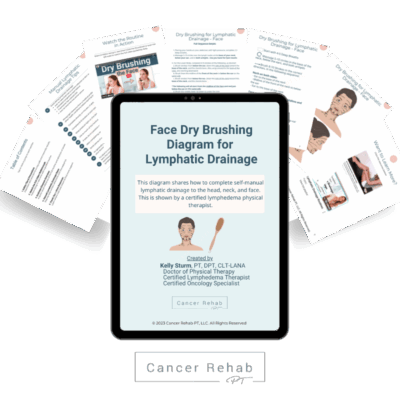
Dry Brushing to the Neck and Face for a Healthy Lymphatic System – Digital
Reduce your caffeine and salt intake
You don’t have to give up your morning coffee (new moms need their caffeine!), but both excess salt and too much caffeine can contribute to fluid retention.
High sodium intake causes your body to hold onto water to maintain proper electrolyte balance, which can make postpartum swelling worse. A lot of caffeine intake can lead to dehydration if you don’t drink enough water, which will also cause your body to retain fluid as a protective measure.
You don’t have to stop using salt or drinking coffee completely, but try to avoid processed foods high in sodium and limit coffee and caffeinated drinks to one or two servings per day.
C-Section Postpartum Swelling
If you had a cesarean birth, you might notice your swelling lasts a bit longer (mine did!), and that’s completely normal. You’ll experience the same general postpartum edema from pregnancy fluid retention, but you may also have additional swelling around your incision site.
This surgical swelling is your body’s normal response to healing, and it usually appears as puffiness or tightness around your belly area.
C-section moms may also experience more prolonged swelling than moms who had a vaginal birth because surgery temporarily disrupts lymphatic flow in the abdominal area, and reduced mobility during early recovery can slow down fluid drainage.
Your swelling might take a bit longer to resolve, but the same remedies like lymphatic drainage massage, drinking water, and elevation for better lymph and blood circulation can still help speed up the process.
Postpartum Swelling Getting Worse?
If your swelling suddenly gets worse, or if it presents with other symptoms like severe headaches, vision changes, or affects only one side of your body, contact your healthcare provider right away, as this could signal a more serious condition.
Remember: You know your body best. If something feels off or different, it’s always okay to call your doctor with questions.
Take care of yourself during this recovery time – you’re doing an amazing job.

